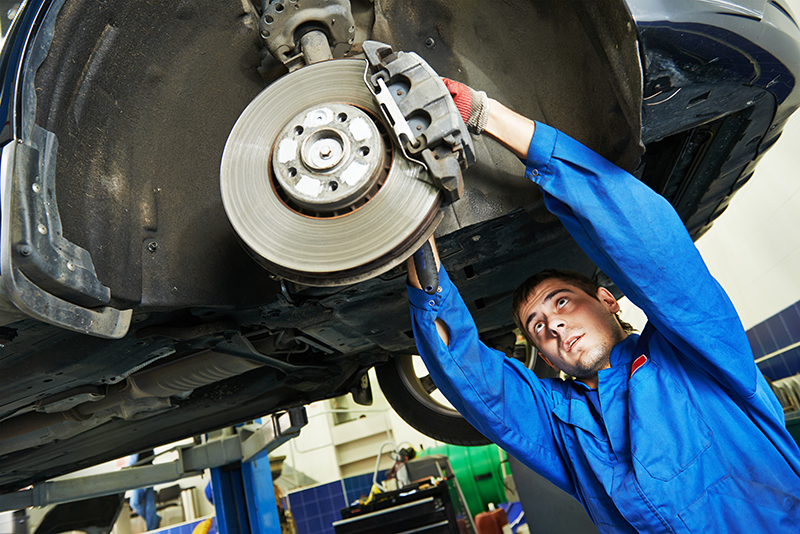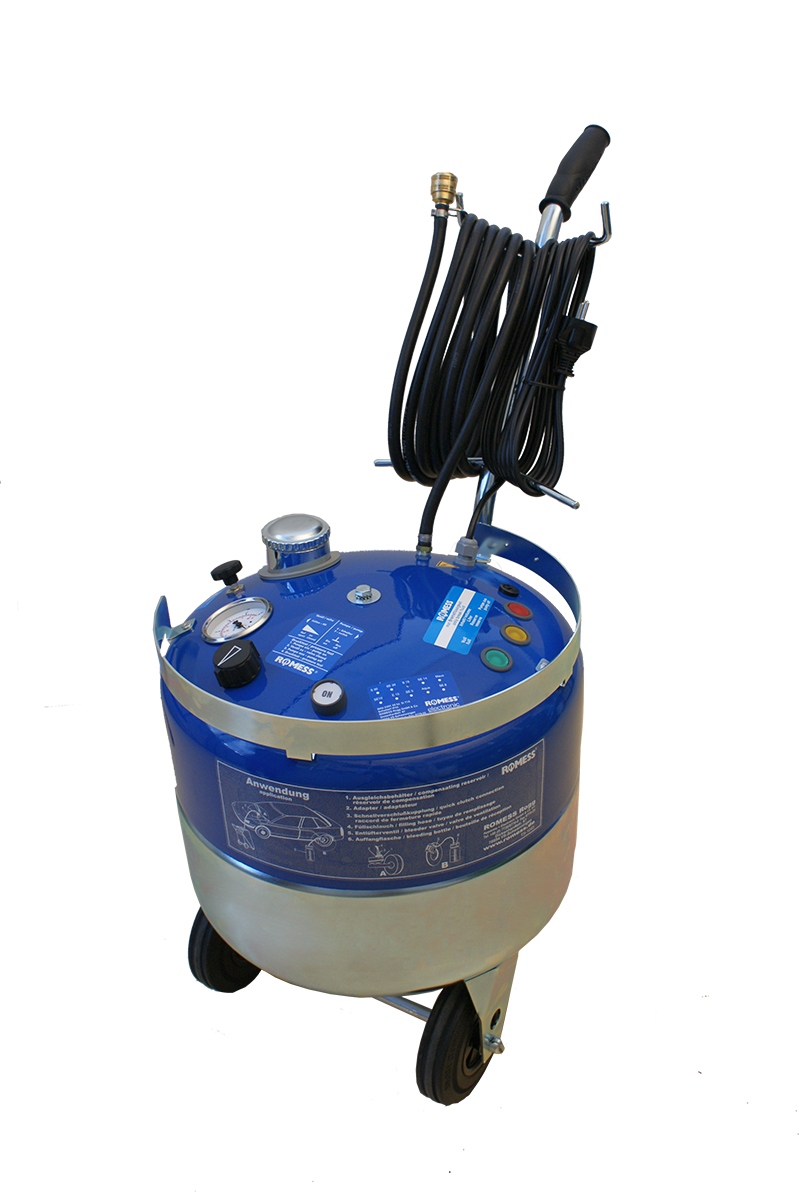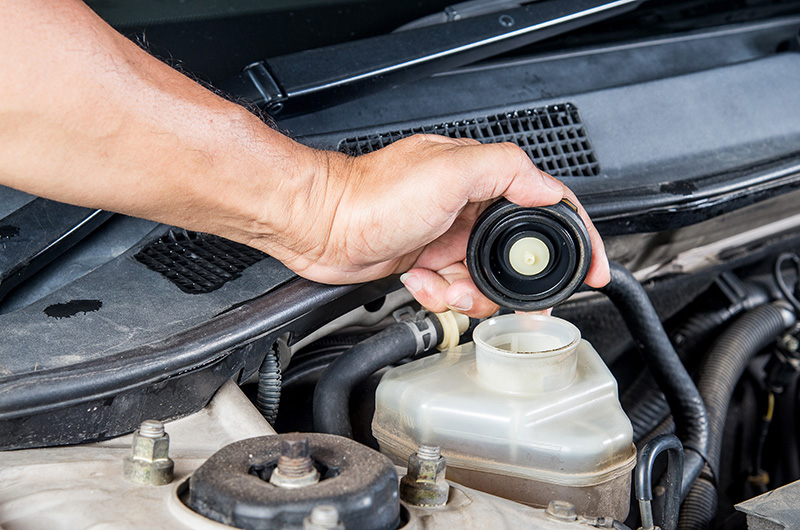
Rozone provides a guide to the safest and most environmentally friendly methods of brake servicing and cleaning.
When we focus on brakes, the issue at the very front of our minds is driver and passenger safety. Poorly maintained braking systems are not only dangerous but can be costly if regular service intervals are missed. Brake discs and calipers can be damaged and tyres exposed to unnecessary wear and tear.
When it comes to brake servicing, corners cannot be cut. Technicians need a safe, efficient and non-hazardous process to clean and bleed braking systems. Many methods in use across independent workshops involve time consuming processes, aggressive solvents and overspray inhalation. These methods can have a negative environmental impact and can be unpleasant for technicians to use in the workplace. Let’s look at a safe alternative to solvent and aerosol brake cleaning.
Exposure to brake dust is a known hazard. Inhalation of these particles can damage an employee’s health, so it is vital to prevent dust becoming airborne when servicing brakes.
The Rozone Brake Washer stops brake dust from being dispersed into the atmosphere by saturating the brakes with a non-hazardous aqueous-based cleaning solution.

Andy Ratcliffe, technical sales consultant at Rozone, says: “We want to help save technicians’ time and money and safeguard their health. This is a great safe alternative to solvents. It’s a mobile, air-powered cleaning system, it’s bright yellow, so easy to spot in a busy workshop, and made of roto-moulded plastic instead of traditional metal, to limit any damage if it accidentally bumps into a customer’s vehicle. We provide all the attachments you need for a quick, easy clean; a brush to agitate, a nozzle to saturate and an air blade to dry the brakes off – ensuring no risk of corrosion.”
The washer is designed to be easy to use, as technicians can simply wheel it to their workstation, connect to an air supply and clean – there are no trailing power leads to electrical sockets which can cause a potential trip hazard.
Andy continues: “Our BCE500 Brake Washer is really flexible and can be wheeled directly under the vehicle on scissor ramps so the cleaning fluid falls straight back into the sink. It can also be used on standard ramps, and we provide a tray to sit on the ramp under the brakes, to catch the cleaning solution before it is poured back into the sink. Either way there is no need to remove the brake drum – all cleaning can be carried out in-situ without the dismantling, lifting and carrying of heavy parts.”
Traditional brake cleaning involves aerosol brake cleaners which are expensive and contain aggressive solvents. These are not good to breathe in and release harmful VOCs, which are not good for the environment. There is also a potential slip hazard from brake cleaner overspray on the workshop floor and they produce hazardous waste in the form of aerosol canisters and dirty rags – both of which need to be disposed of properly.
Andy explains: “Rozone’s Brake Washer negates all of these headaches for a workshop manager or garage owner and provides a cost-effective, economic, concentrated cleaning fluid. Maintaining the washer is simply a matter of changing the sock filter and cleaning fluid according to your usage. There are no service contracts to sign up to or aerosol waste to dispose.”
A job for one
Servicing brakes can be costly and such a vital element of a vehicle’s maintenance must be done accurately, otherwise the safety of a car will be affected. Old brake fluid becomes discoloured as it takes on contaminants from the environment and dirt, air and water can cause major issues in a vehicle’s braking system. By replacing the brake fluid at the manufacturer’s recommended service intervals (usually every two years or 24,000 miles, whichever comes first) these contaminants are kept to a minimum and a vehicle’s braking performance is like new.
Andy Ratcliffe says: “Our brake and clutch bleeders are approved by the likes of Mercedes, BMW, VW, Ford, Volvo, and Renault. They are suitable for motorbikes, cars and vans, and enable technicians to fulfil brake servicing tasks safely and more efficiently.

“The mobile units only need one-person to operate them and in around five minutes, a brake and clutch fluid change will be achieved, quickly, safely and easily. No compressed air is needed as they work electronically.”
How does the brake bleeding range work?
- The brake fluid is pumped from the tank into a master cylinder fluid reservoir fitted with a special quick-lock adapter
- When the electric pump is switched on, pressure in the tank builds up slowly to prevent the brake fluid from churning
- The flow flushes and vents the smallest of air and moisture locks and any dirt and debris out of the hydraulic system for a complete flush and bleed
- The integrated shut-off valve allows a leakage test to be performed after repair of the brake or clutch system
How is the fluid level monitored?
- A floater valve monitors the fluid level
- On reaching the minimum fluid level of 1.5 litres, the pump automatically shuts off to avoid air being inadvertently pumped into the hydraulic system. An audible buzzer or traffic light system warns the operator of low fluid level
What brake systems can it be used with?
- The complete vent and bleed of the system ensures functional reliability of ABS, ESP, EDS, SBC brake systems and clutches
- Machines come equipped with a standard adapter to cover most vehicles and a waste fluid bottle that connects to the brake nipple to collect waste fluid









